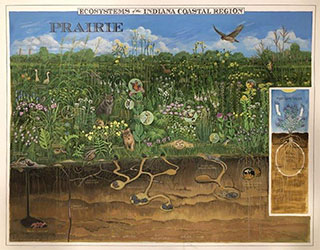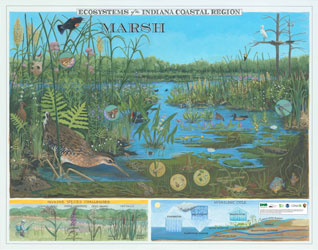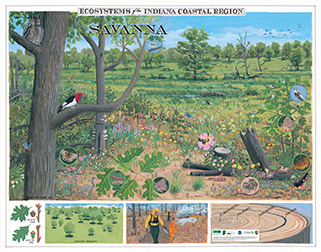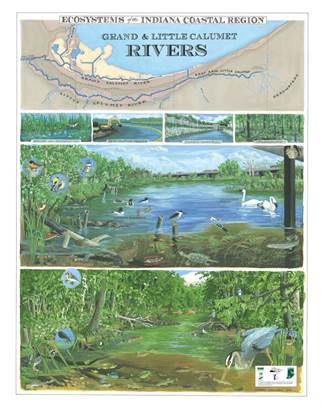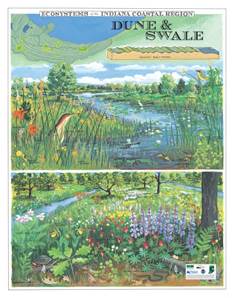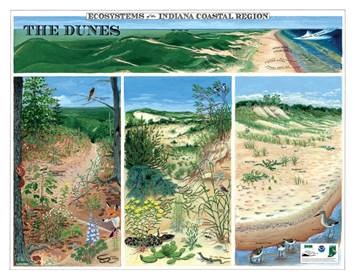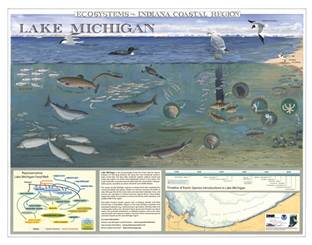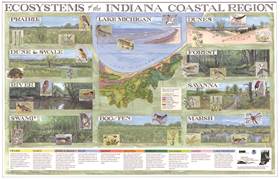The Ecosystems of the Indiana Coastal Region Poster series is part of the LMCP’s outreach campaign to raise awareness of Coastal Resources. The campaign started in 2005 with the release of the Ecosystems of the Indiana Coastal Region – Overview poster. New posters are unveiled roughly every two years.
Below you can view the eight posters that have been unveiled so far. There are four more posters planned to complete the series. The LMCP commissioned local artist Barb Labus to develop the posters, which contain a wealth of information in a striking format. Funding for this initiative is from our partners at the National Oceanic and Atmospheric Administration Office for Coastal Management under the Coastal Zone Management Act and the U.S. Environmental Protection Agency via the Great Lakes Restoration Initiative (see specifics below regarding source per poster)
Posters may be picked up at locations in the coastal region.
Indiana Dunes State Park Nature Center (Hours Vary by Season):
1600 N. 25 E
Chesterton, IN 46304Indiana DNR Michigan City Office (Hours Vary)
100 West Water Street
Michigan City, IN 46360
Forest - 2024
 Forest: a natural community that is dominated by trees. Some forests have a multi-layered canopy of trees with smaller trees and shrubs below the overstory. Within the Lake Michigan watershed, there are upland forests that occur on higher ground, there are floodplain forests that occur along streams and are prone to flooding, and there are flatwood forests that occur on level ground and can have seasonal wetlands within the forest. This forest poster also highlights the significance and benefits of urban forests and private forests.
Forest: a natural community that is dominated by trees. Some forests have a multi-layered canopy of trees with smaller trees and shrubs below the overstory. Within the Lake Michigan watershed, there are upland forests that occur on higher ground, there are floodplain forests that occur along streams and are prone to flooding, and there are flatwood forests that occur on level ground and can have seasonal wetlands within the forest. This forest poster also highlights the significance and benefits of urban forests and private forests.
This publication was made possible by grant Award #NA21NOS4190081 from the National Oceanic and Atmospheric Administration Office for Coastal Management.

